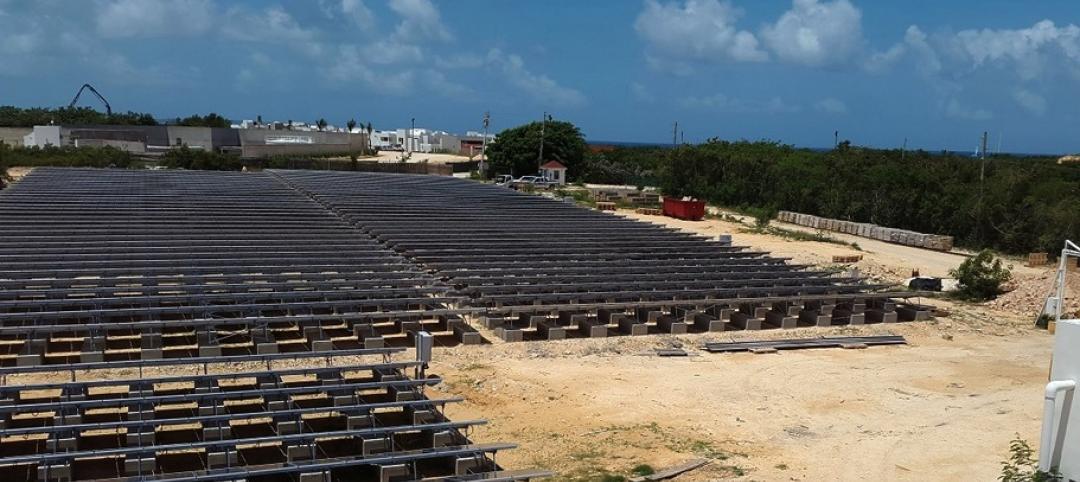In less than half a decade, the wellness movement has taken hold in the global real estate market. As of mid-April, nearly 2,600 building projects across the globe were either certified or registered through the International WELL Building Institute’s WELL Standard or the Center for Active Design’s Fitwel rating system.
Even more impressive, 4,360 design, construction, and real estate professionals have earned their WELL Accredited Professional status, and another 3,485 WELL APs are in the making. Tack on Fitwel’s cadre of 1,900+ “Ambassadors” and active users, and we’re looking at an army 9,400 strong pushing the merits of these programs.
Corporate America also has jumped on the wellness train. In 2017, nearly half of all worksites in the U.S. offered some type of health promotion or wellness program, including an astounding 92% of worksites with 500+ employees, according to the Centers for Disease Control and Prevention.
Clearly, wellness in the workplace has become big business, especially for large employers that hope their investment in healthier, lower-stress work environments will lead to improved employee health and, ultimately, lower healthcare costs.
ALSO SEE: Half of corporate and government offices offer wellness programs (CDC study)
But getting wellness to pay off may not be that simple, or even a wise investment to begin with, as evidenced by a peer-reviewed study published last month in The Journal of the American Medical Association (BDCnetwork.com/WellnessStudy19). The study involved a randomized trial of 32,974 employees across 160 worksites (20 sites with wellness plans, 140 control sites) at a large U.S. warehouse retail company.
First the good news: After 18 months, the worksites with the standardized wellness program had an 8.3-percentage point higher rate of employees who reported engaging in regular exercise (69.8% vs. 61.9%, with an adjusted difference of 0.03) and a 13.6-percentage point higher rate of employees who reported actively managing their weight (69.2% vs. 54.7%).
Now the not-so-positive news: When looking at the traditional measures of health, particularly as they pertain to health insurance premiums—namely cholesterol, blood pressure, and body mass index—there were no significant differences between the treatment group and the control group after 18 months. The same for healthcare spending and utilization, absenteeism, tenure, job performance, sleep quality, and even food choices.
It seems, according to this study at least, that workplace wellness programs can create environments that promote improved health behaviors among employees, but achieving lower healthcare spending and utilization are a stretch.
On another note, the BD+C editorial team needs your input for a first-of-its-kind AEC industry research project. For more than 40 years, BD+C editors have ranked the nation’s largest AEC firms as part of our annual Giants 300 Report. This year, we’re launching a companion research survey focused on tech and innovation trends at AEC Giant firms. If your firm is an AEC Giant and is adopting and vetting advanced tech tools, we invite you to participate in our 10-minute, 11-question Giants Tech and Innovation Survey. The results will be published this fall in BD+C. Take the survey at: BDCnetwork.com/TechSurvey19.
Related Stories
Green | Jun 18, 2015
‘Solar water’ poised as global solution
Strapped with both water and energy crises, several island nations are investing in solar-powered water plants to attain more resilient water and power sources.
Lighting | Jun 17, 2015
LED lighting: Replaceable or disposable?
While first generation LED lighting fixtures were basically your standard incandescent or fluorescent housing retrofitted with LED light boards, manufacturers have now begun designing fixtures around the LEDs, writes SmithGroupJJR's Michael Nowicki.
High-rise Construction | Jun 15, 2015
Cornell Tech breaks ground on world's first Passive House residential high-rise
To achieve Passive House standards, Cornell Tech Residential will incorporate a number of sustainability-focused design elements. The façade, constructed of a prefabricated metal panel system, acts as a thermally insulated blanket wrapping the building structure.
Green | Jun 10, 2015
GBCI launches rating system for sustainable landscapes
The new SITES rating system can be applied to development projects located on sites with or without buildings, ranging from national parks to corporate campuses, streetscapes and homes, and much more.
Green | Jun 9, 2015
Fuel cell technology makes its way into energy generation
Demand for fuel cells, while modest, is growing, and cost savings are getting noticed.
Green | Jun 8, 2015
Maryland tech firm is developing spray-on solar panels for windows
Made primarily out of hydrogen and carbon, the coating can turn see-through surfaces into solar panels.
Green | Jun 8, 2015
Diamond Schmitt Architects creates tool to compare energy use data across building types
The firm's new ecoMetrics tool allows for a comprehensive analysis of data from energy simulation models across a wide range of the company’s building types.
Multifamily Housing | May 30, 2015
Energy Department releases resources to assess building energy benchmarking policies, programs
The new handbook demonstrates methodologies using real data from New York City.
Cultural Facilities | May 13, 2015
MVRDV selected to design High Line-inspired park in Seoul
The garden will be organized as a library of plants, which will make the park easier to navigate.














